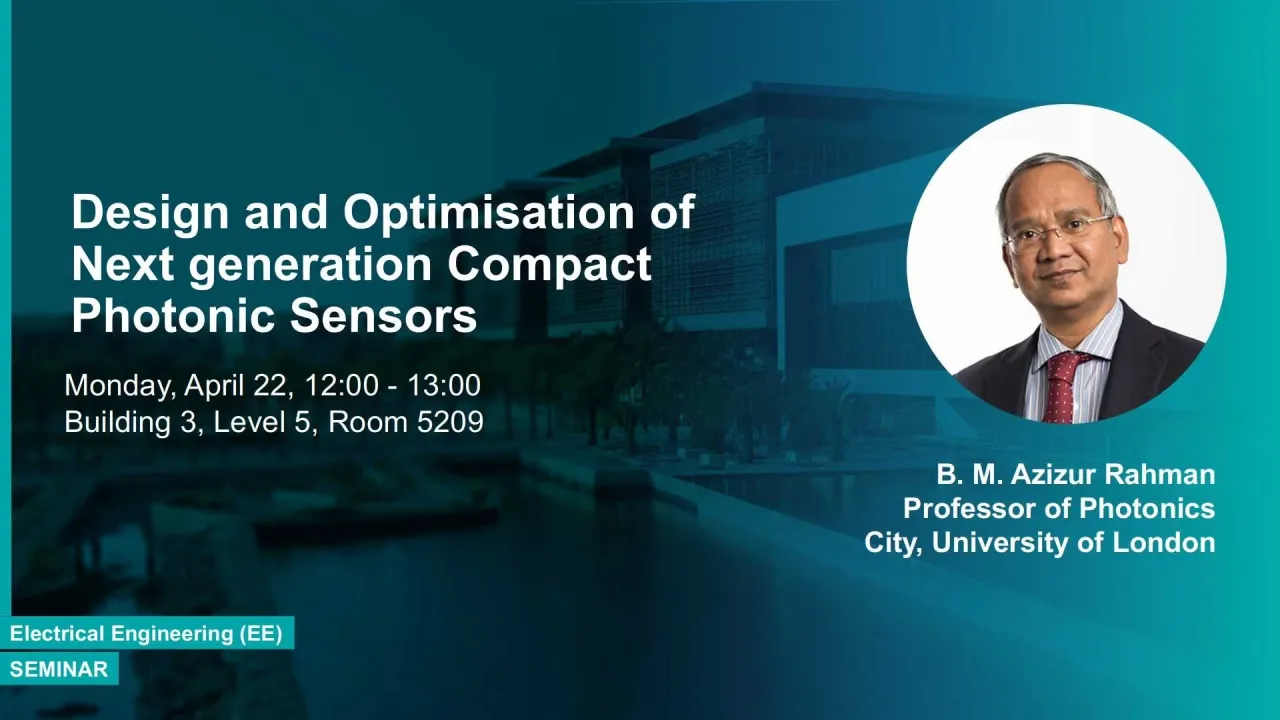
Design and Optimisation of Next generation Compact Photonic Sensors
Although optical sensors incorporating grating inscribed and etched fibres are now sufficiently mature and well established in the market, however, designs based on more exotic nanowires and photonic crystal fibres are becoming increasingly important and showing much improved sensitivity by accessing a larger evanescent field. Similarly, novel planar design concepts, such as the silicon slot guide-based design is showing even greater promise, allowing the exploitation of well-developed CMOS fabrication technologies for potentially low-cost sensor elements.
Overview
Abstract
Although optical sensors incorporating grating inscribed and etched fibres are now sufficiently mature and well established in the market, however, designs based on more exotic nanowires and photonic crystal fibres are becoming increasingly important and showing much improved sensitivity by accessing a larger evanescent field. Similarly, novel planar design concepts, such as the silicon slot guide-based design is showing even greater promise, allowing the exploitation of well-developed CMOS fabrication technologies for potentially low-cost sensor elements. In compact Integrated Optic format, dielectric slots, plasmonic slots, Mach-Zehnder interferometer, and ring resonators are also emerging as novel photonic sensors.
However, high index contrast also makes the modes in such sensing structures fully hybrid in nature and in such a case, full-vectorial rigorous numerical approaches will be necessary for their design optimisation. Some selected results for silicon based compact photonic sensors will be presented illustrating the value and potential of the computationally efficient finite element method in such designs.
The development of slot waveguides has created new opportunities for exotic optical sensor by guiding light in low index sensing area, such as air or water in the slot region and thus creating the potential for more advanced, sensitive yet very compact and low-cost photonic sensors. The design and optimisation of such novel vertical slots , horizontal slots and polarization independent cross-slots for biosensing will be presented. The design of a novel plasmonic slot supporting complex plasmonic modes for gas sensing [4, 5] will also be presented. The design optimisation of metal coated silica nanowire for bio sensing and doped ZnO coated gold nanowire for gas sensing, chemical sensing and a resonating straight slots for biosensing will also be presented.
References
- T Dar, J Homla, B M A Rahman, and M Rajarajan, Label-free slot-waveguide biosensor for the detection of DNA hybridization, Applied Optics, 51, pp.8195-8202, Dec 2012.
- C Viphakavit, B M A Rahman, Optimization of a horizontal slot waveguide biosensor to detect DNA hybridization, Applied Optics, pp.4881-4888, May 2015.
- Chao Pan and B M A Rahman, High-sensitivity Polarization-independent Biochemical Sensor based on Silicon-on-insulator Cross-slot Waveguide, IEEE Selected Topics in Quantum Electronics, vol. 17, March-April 2017, 2017,
- S Ghosh, B M A Rahman, A compact Mach-Zhender interferometer using composite plasmonic waveguide for ethanol vapour sensing, IEEE J Lightwave Technol, pp.3003-3011, July 2017
- Ritapa Bhattacharjee, N. T. Kejalakshmy, and B. M. Azizur Rahman, Design and Optimization of an Al Doped ZnO in Si-Slot for Gas Sensing, IEEE Photonics Journal, Volume 10, Number 4, August 2018,
- S Aminah, B M A Rahman, Evolution of surface plasmon supermodes in metal-clad microwire and its potential for biosensing, IEEE J Lightwave Technol, pp.4684-4691, Nov. 2017
- N T Kejalakshmy, K T V Grattan, B M A Rahman, Investigation of the Optical Modal Properties of Al+3 Doped ZnO-Coated Au Waveguide for Gas Sensing Applications using the Finite Element Method. IEEE Sensors, pp. 1176-1181, March 2016
- S Ghosh, B M A Rahman, Design of On-chip Hybrid Plasmonic Mach-Zehnder Interferometer for Temperature and Concentration Detection of Chemical Solution, Sensors and Actuators, vol 279, page 490-502, Jan. 2019
- S Ghosh and B M A Rahman, An innovative straight resonator incorporating a vertical slot as an efficient bio-sensors, IEEE STQE, DOI 10.1109/JSTQE.2016.2630299
Brief Biography
B. M. Azizur Rahman received the B.Sc.Eng and M.Sc.Eng. degrees in Electrical Engineering with distinctions from Bangladesh University of Engineering and Technology (BUET), Dhaka, Bangladesh, in 1976 and 1979, respectively. He also received two gold medals for being the best undergraduate and graduate students of the university in 1976 and 1979, respectively. In 1979, he was awarded with a Commonwealth Scholarship to study for a PhD degree in the UK and subsequently in 1982 received his PhD degree in Electronics from University College London.
In 1988, he joined City, University of London, as a lecturer, and became a full professor in 2000. At City, he leads the research group on Photonics Modelling, specialised in the use of rigorous and full-vectorial numerical approaches to design, analyse and optimise a wide range of photonic devices. He has published more than 550 journal and conference papers, and his journal papers have been cited more than 5100 times, with an h-index value of 34. He has supervised 31 students to complete their PhD degrees as their first supervisor and received more than £11 M in research grants. Prof. Rahman is a Life Fellow of the IEEE, and Fellow of the Optical Society of America and the SPIE.
Refreshments: Light lunch will be available from 12:00 noon.
